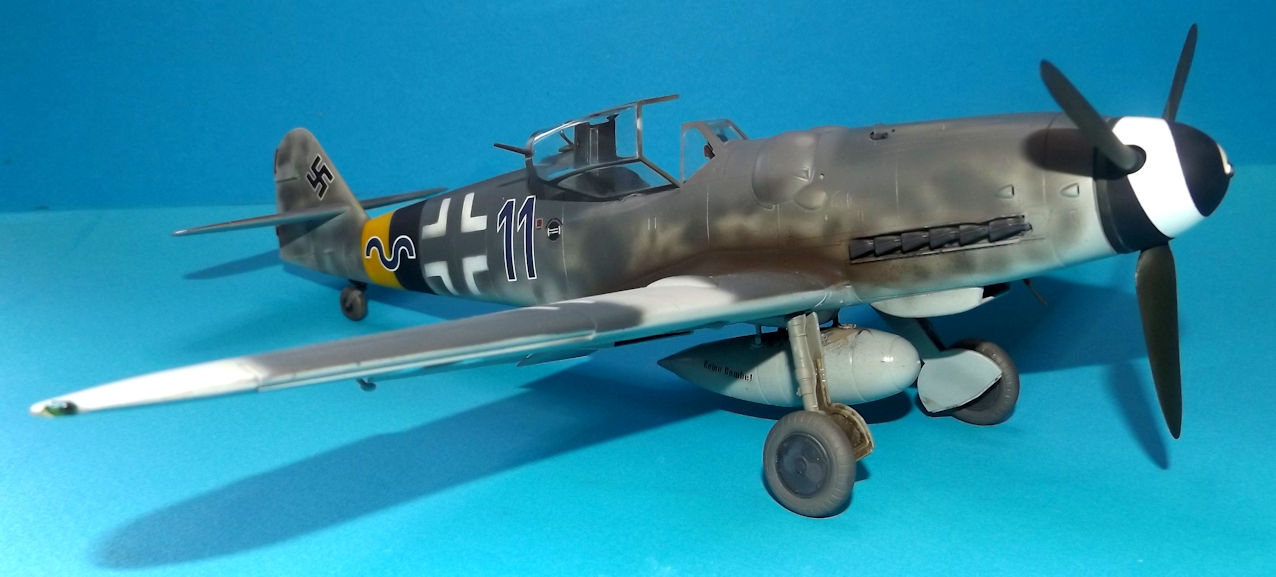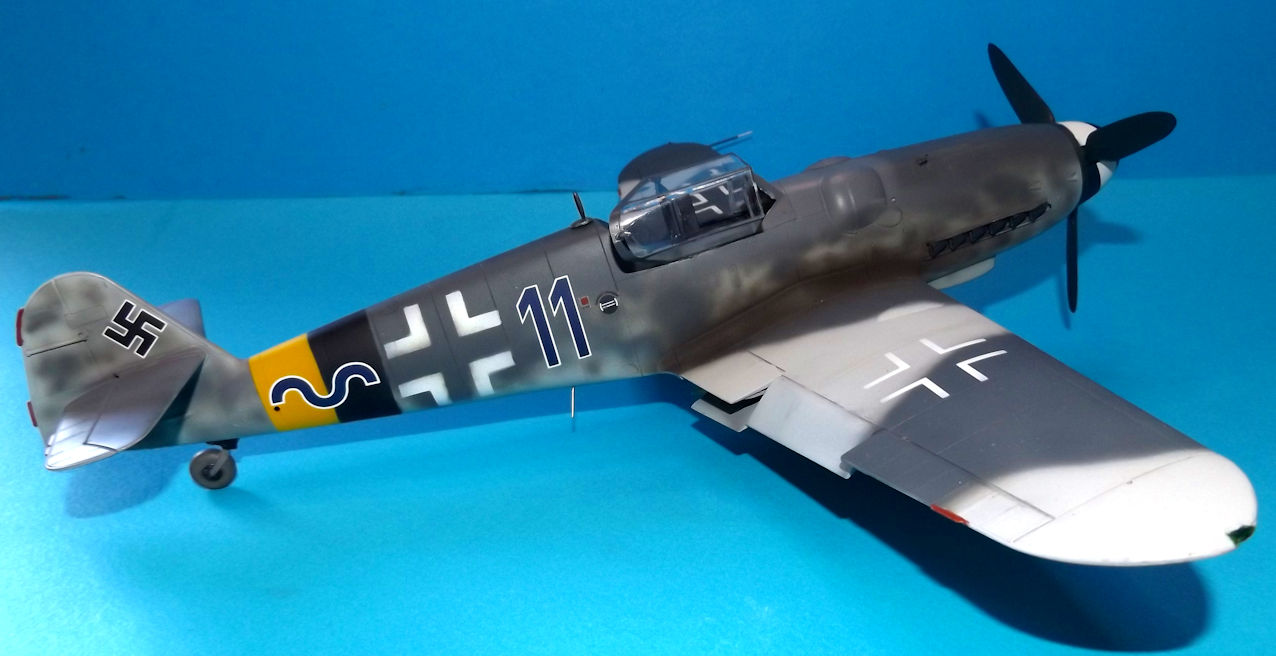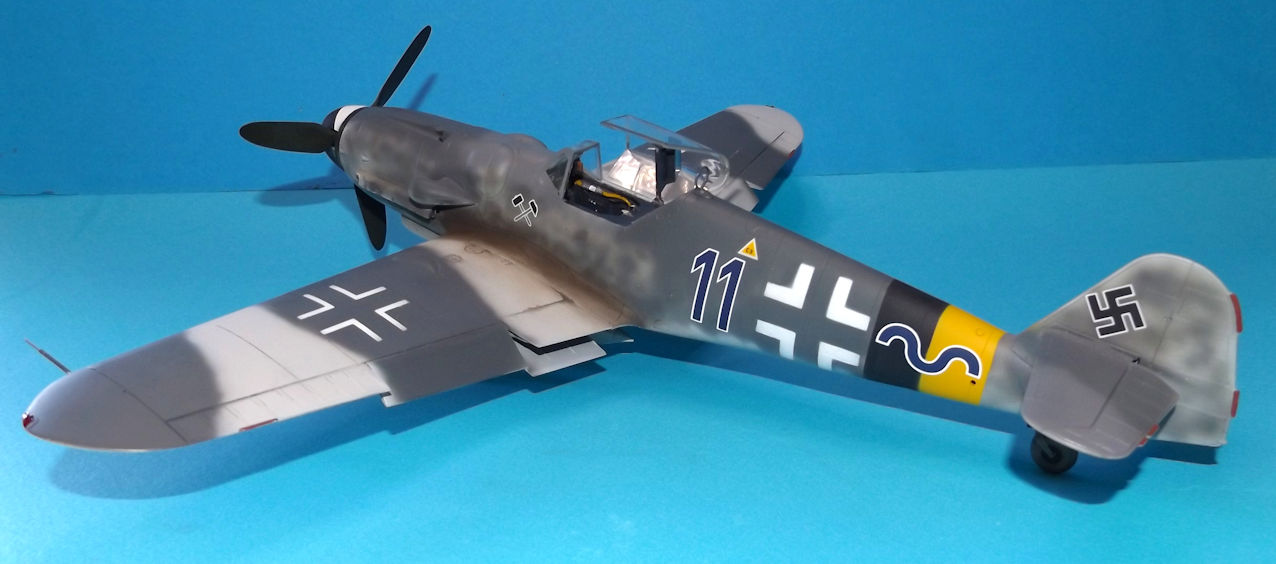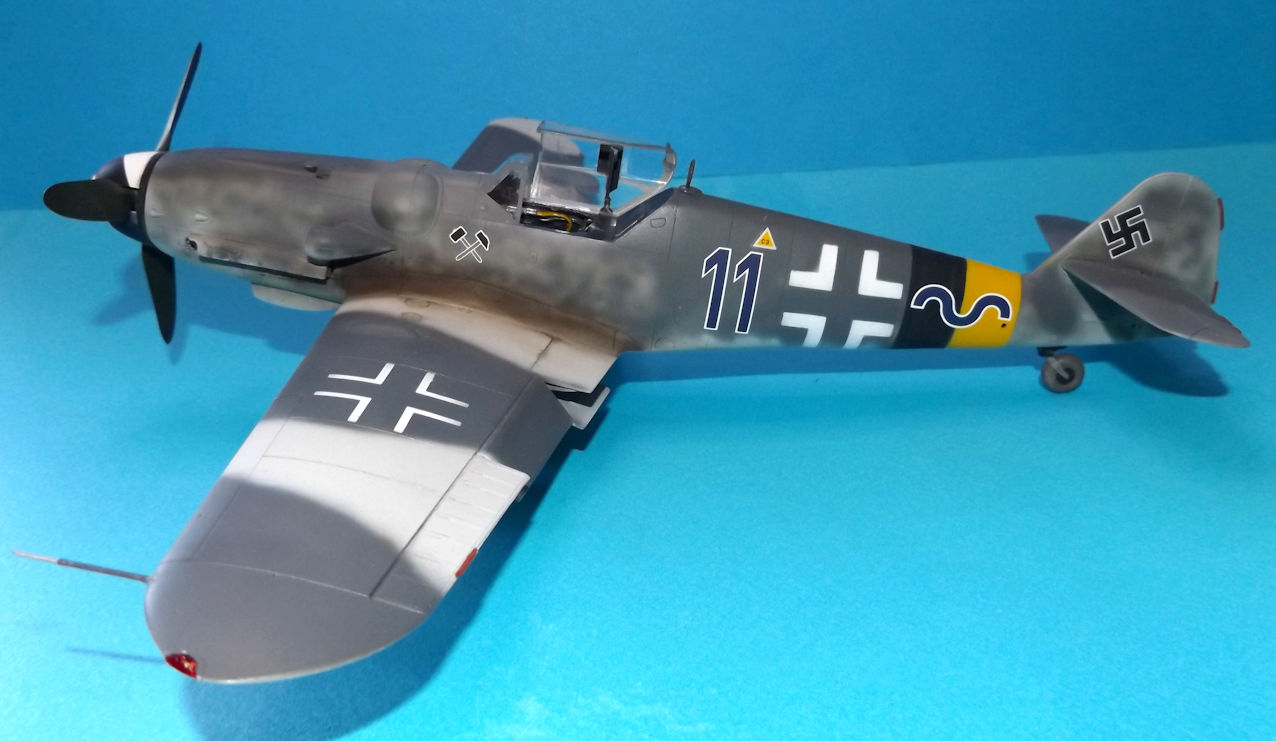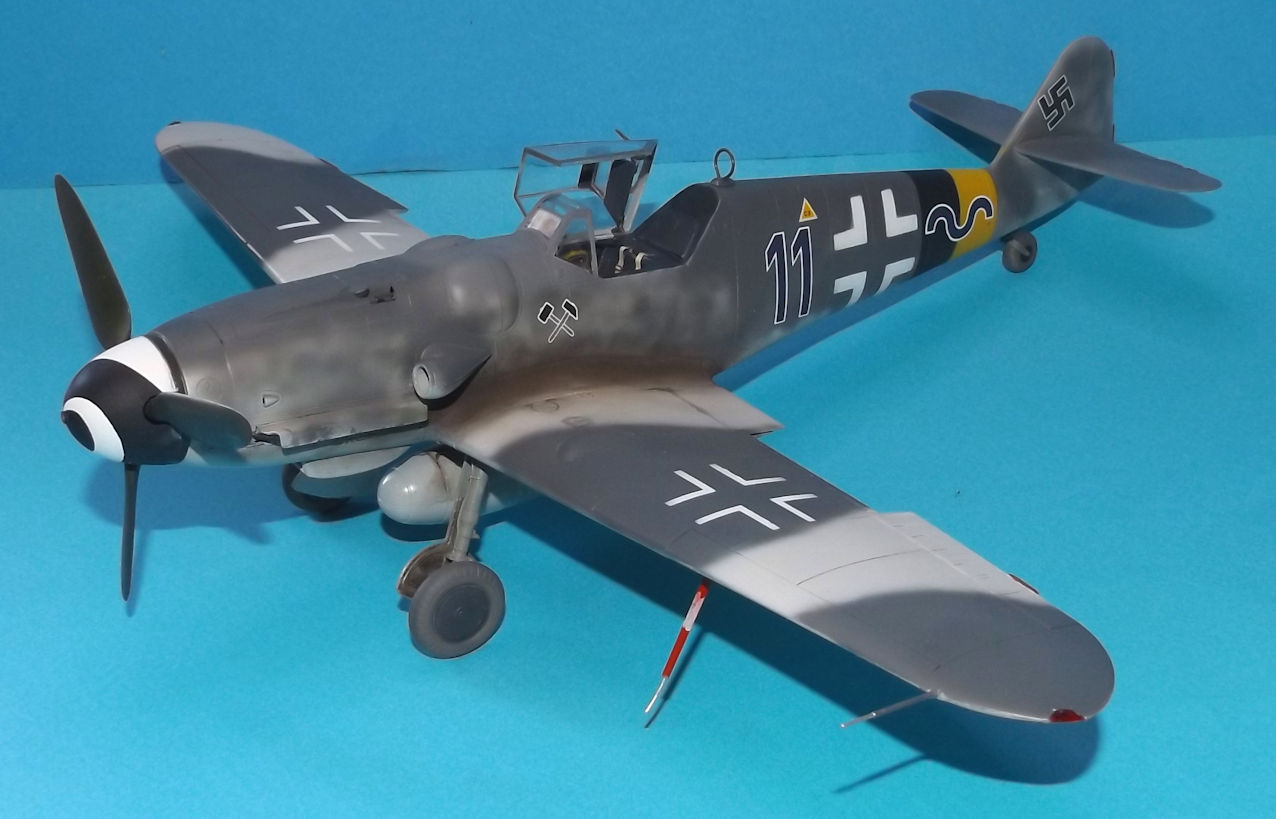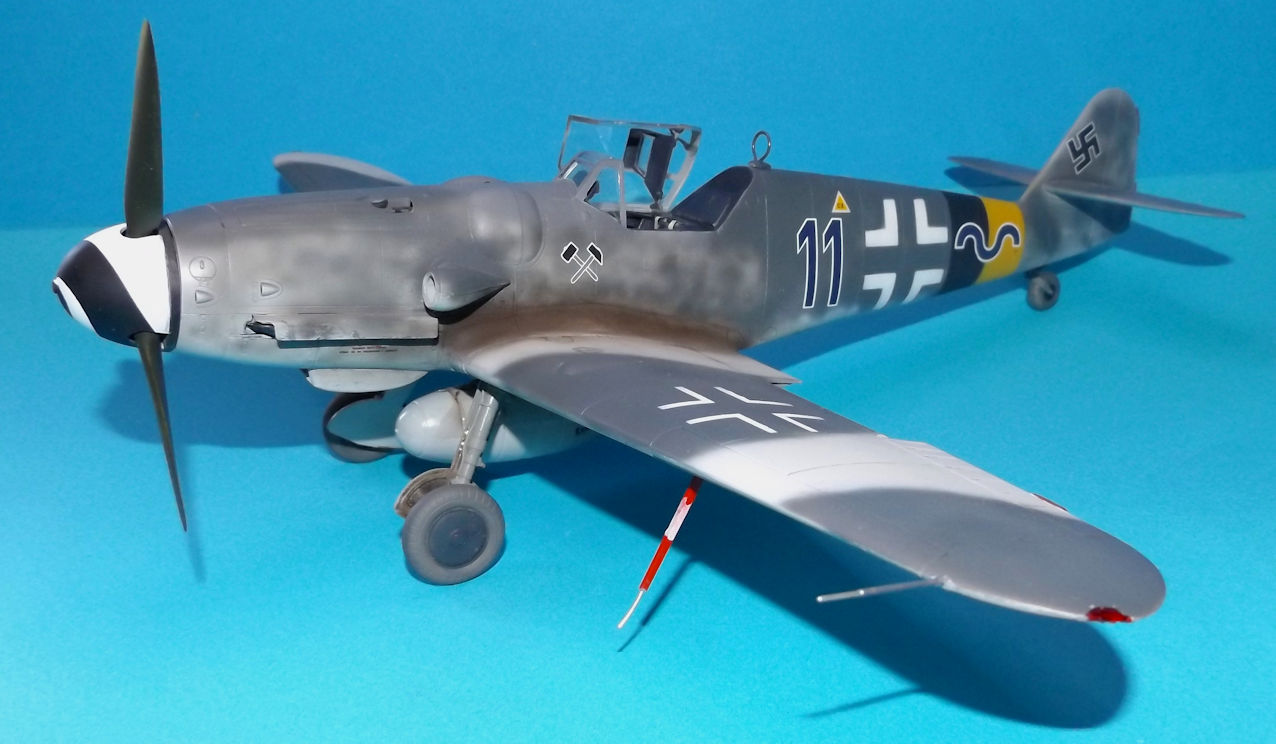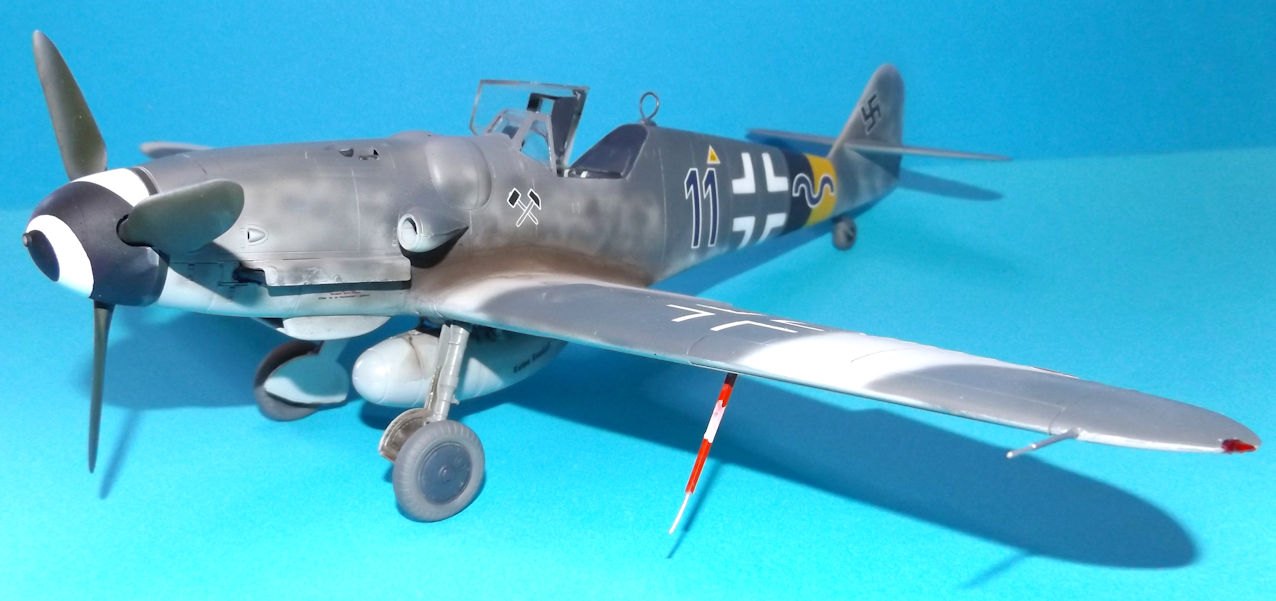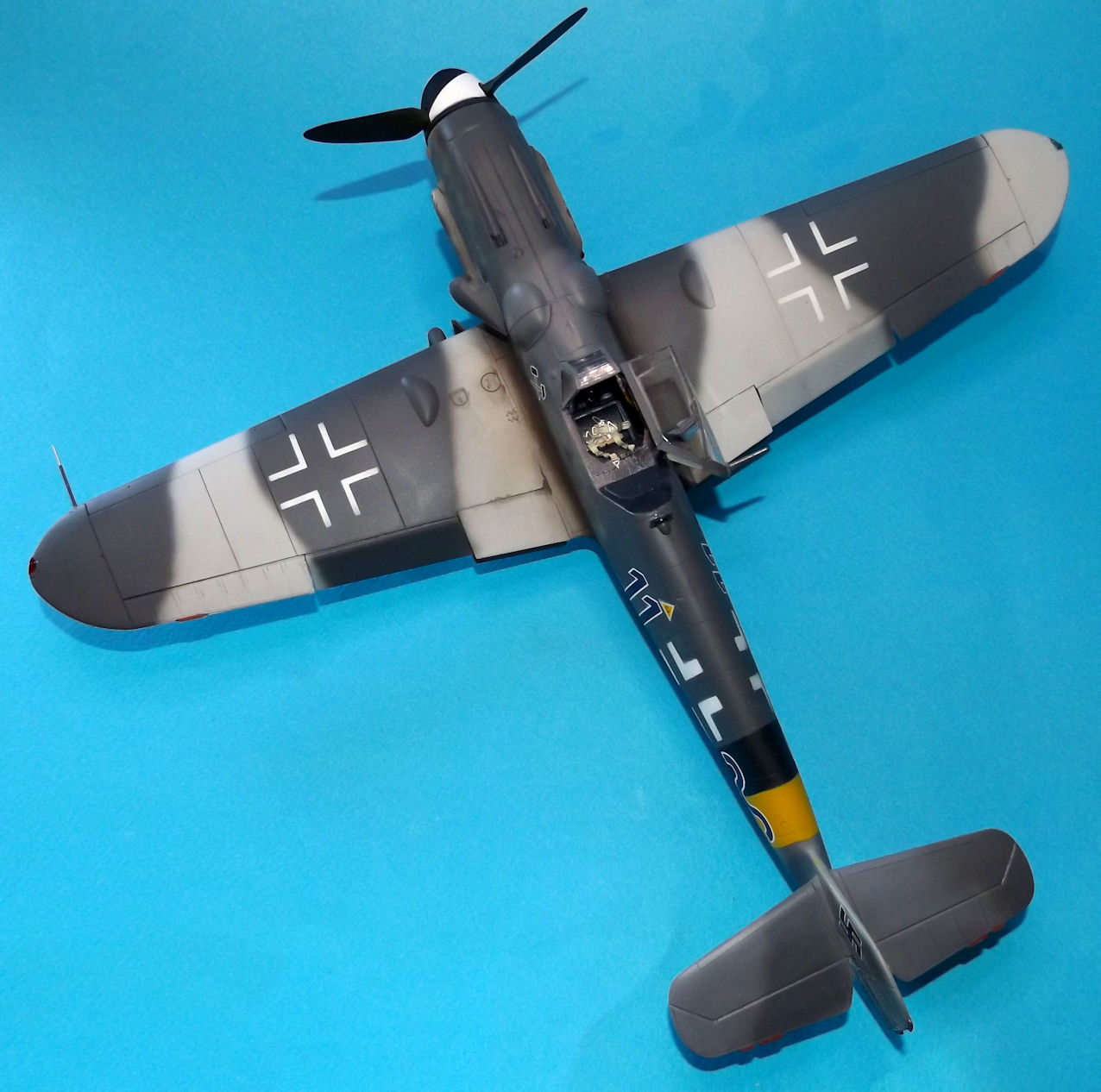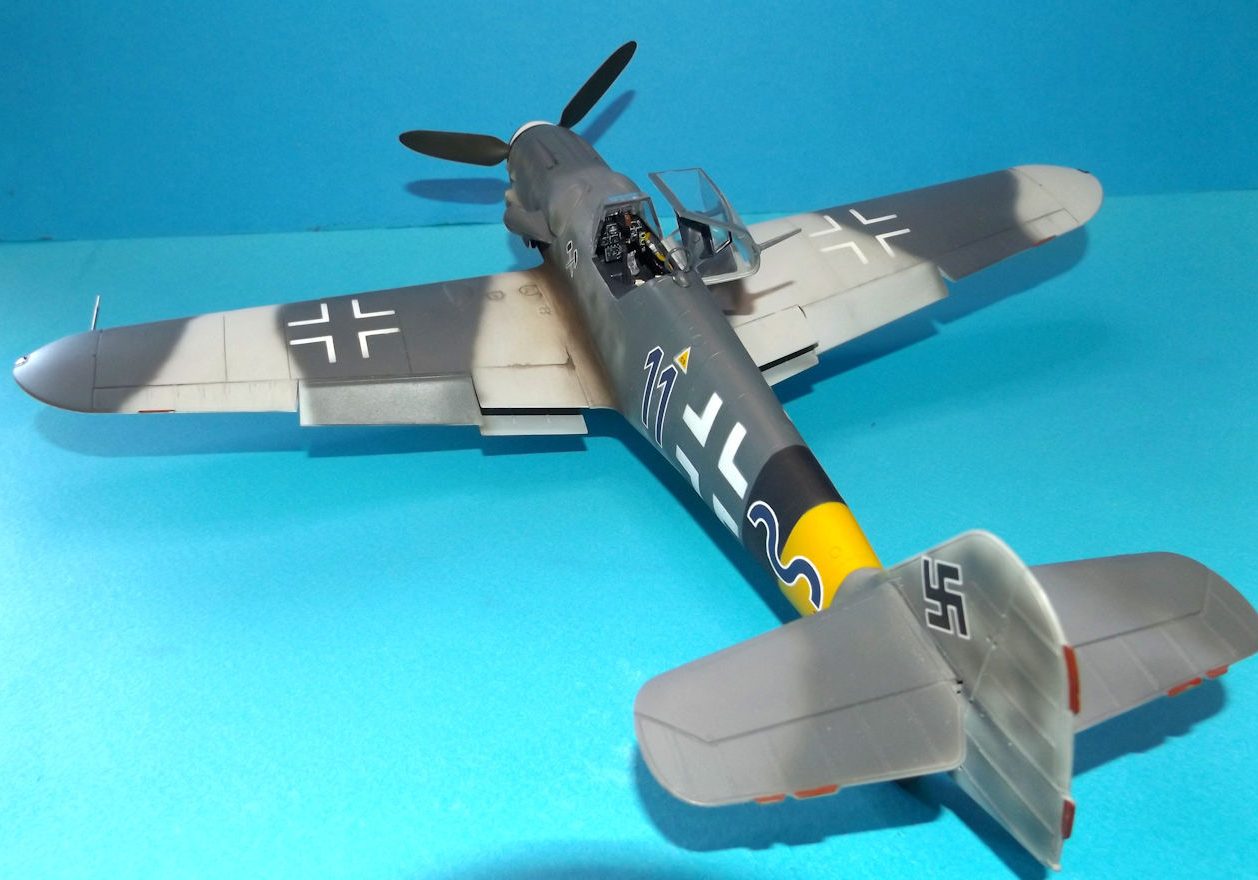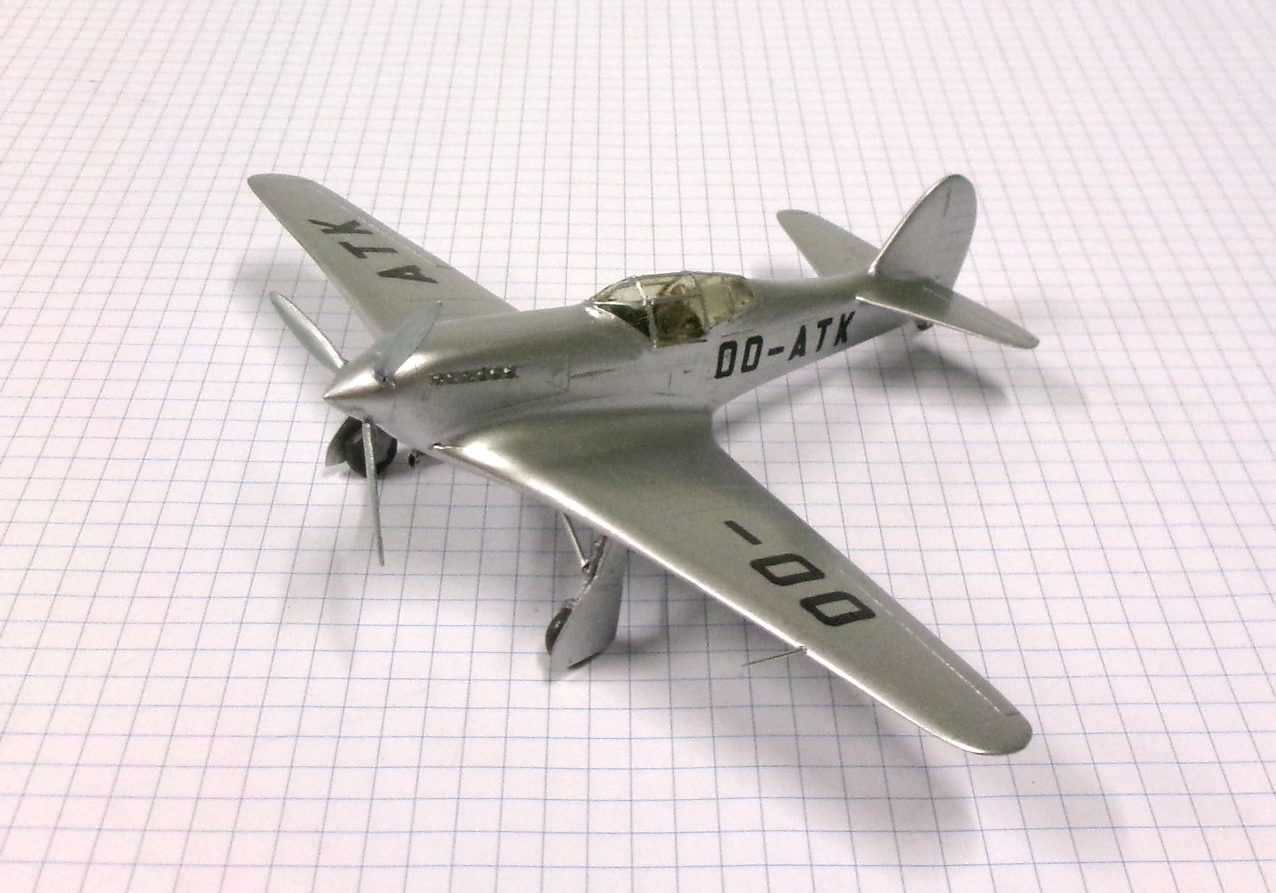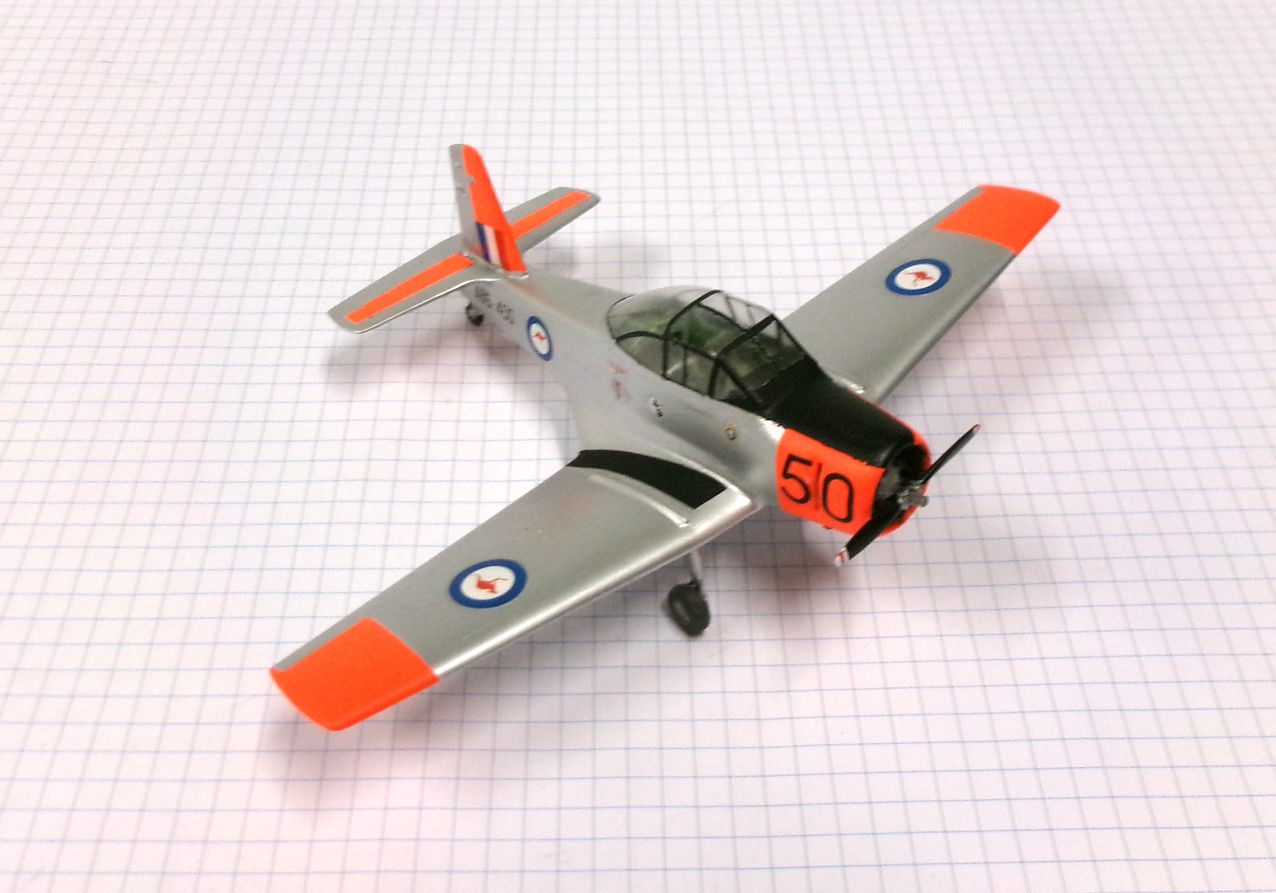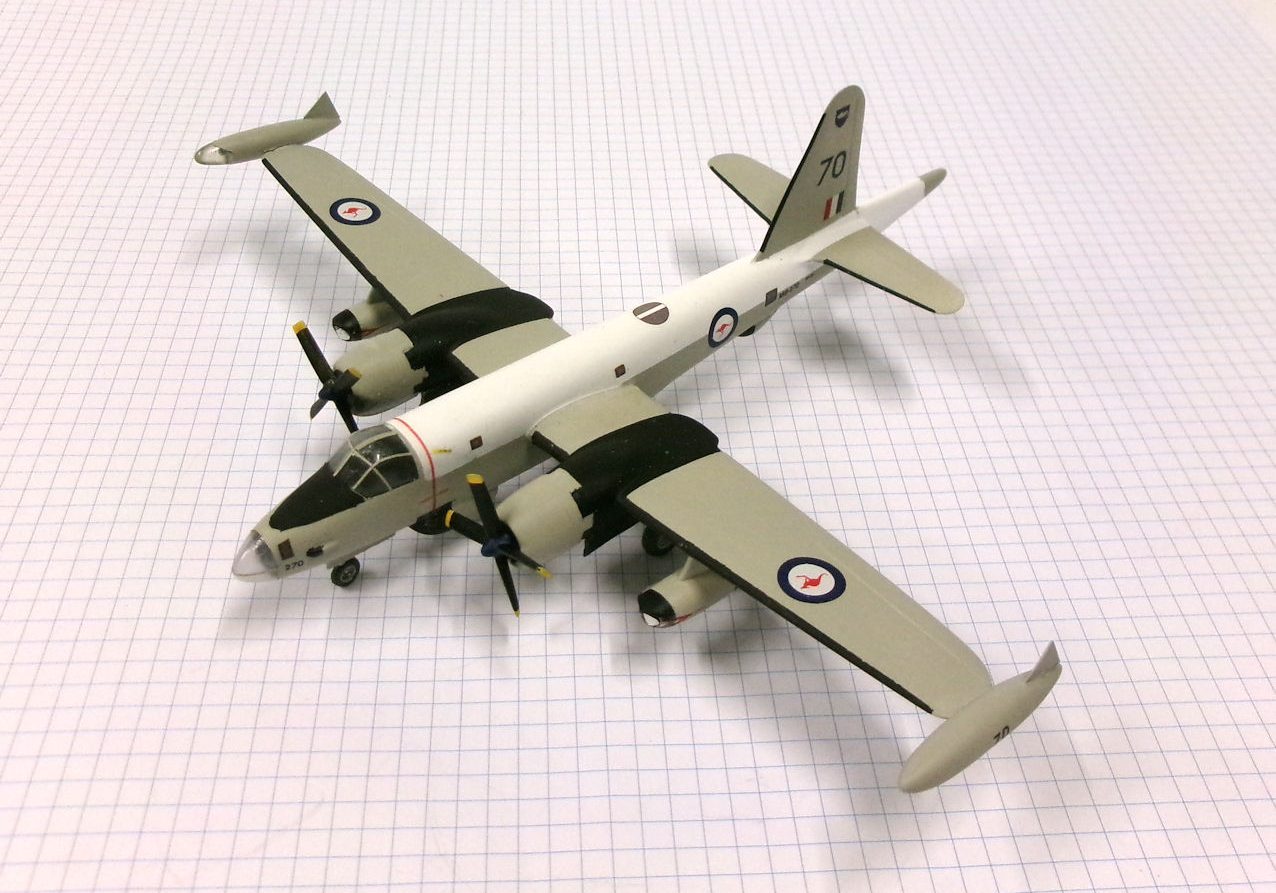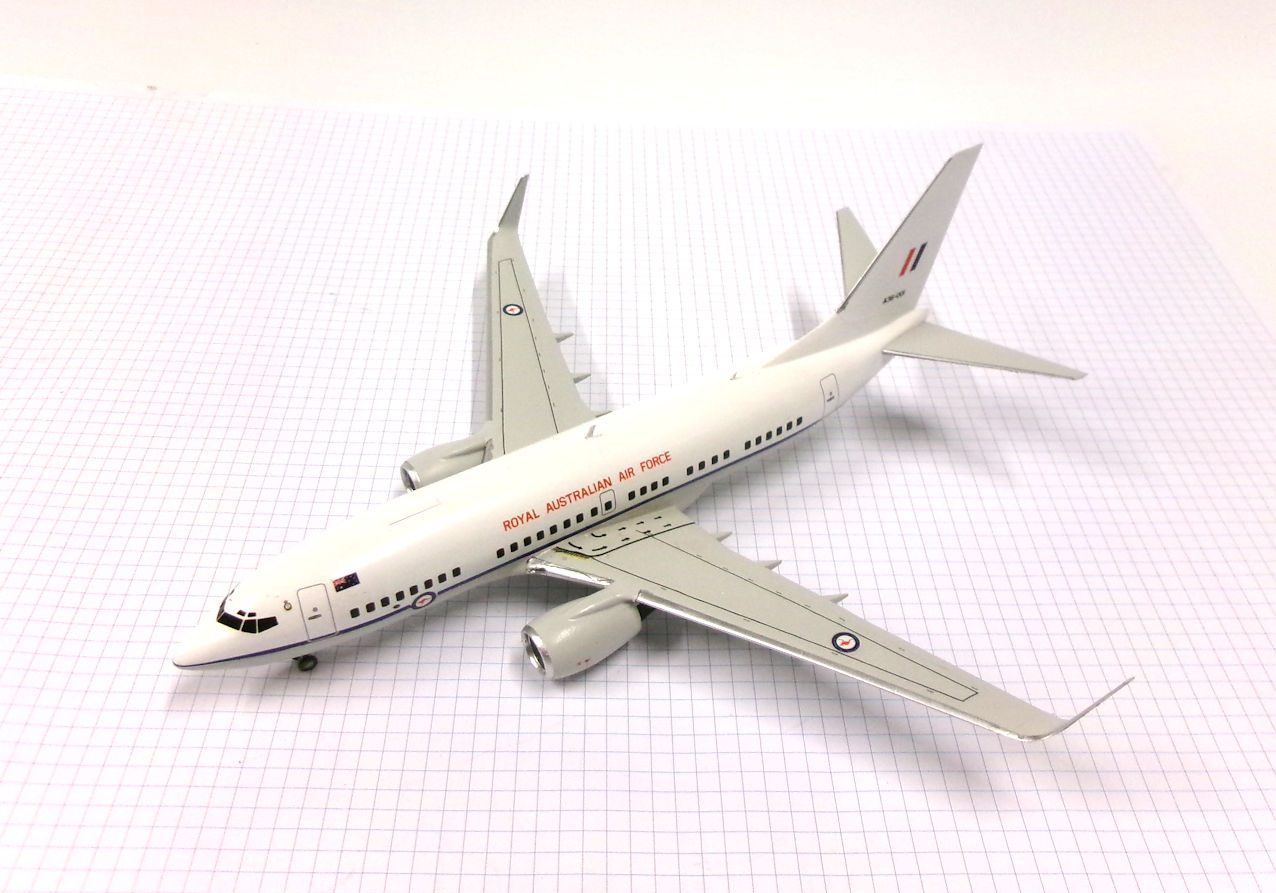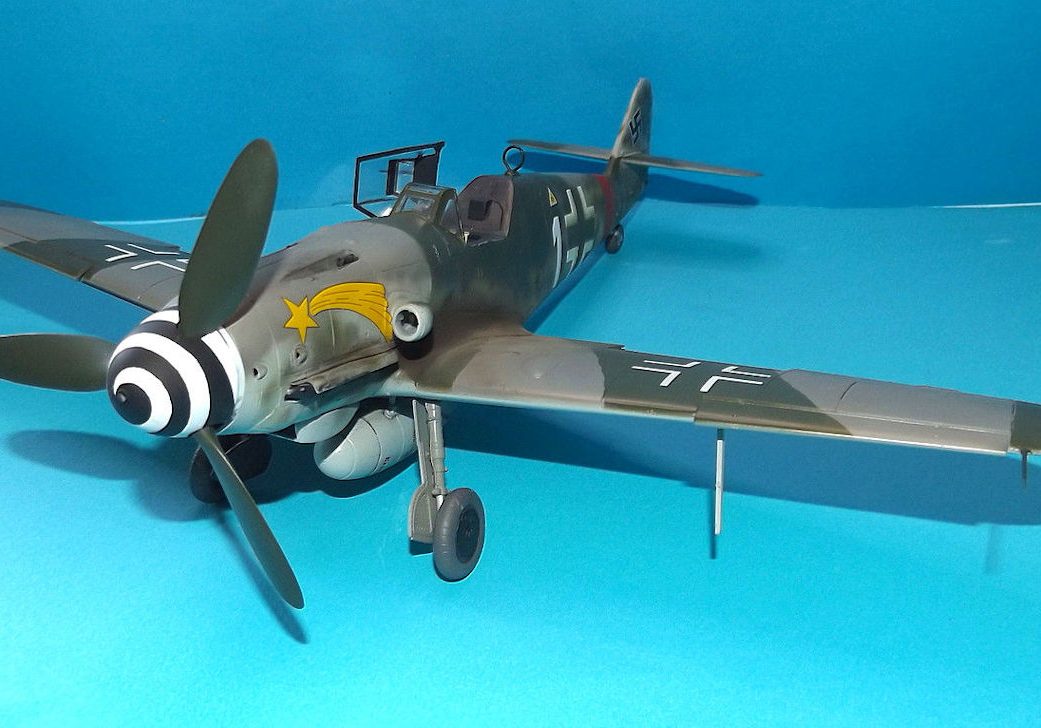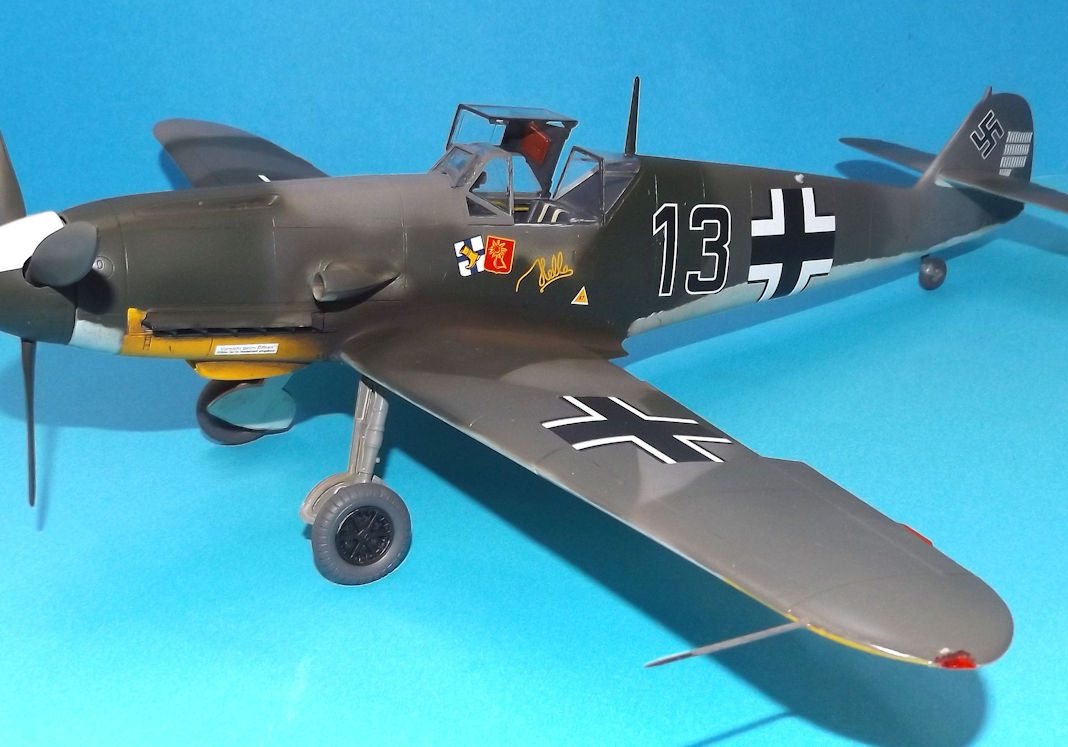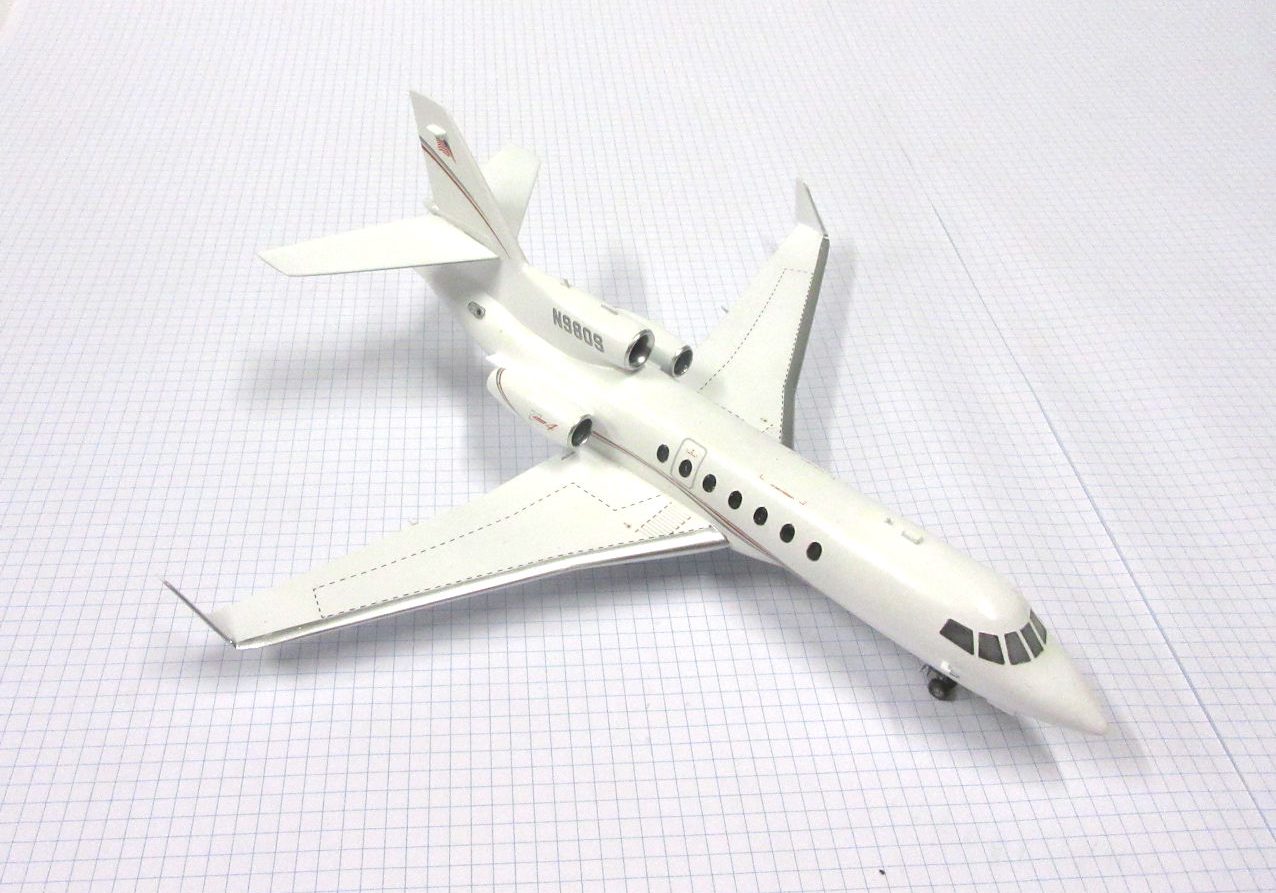History
The Messerchmitt Bf109 was an important German fighter during World War II. The Bf109G-14 was the final version of the G series incorporating the improvements made to previously Bf109G models.
The ‘G’ version of Messerschnitt Bf109 fighter was the third major version of the fighter that entered service in early 1942.
This model represents the Bf-109 G-14 flown by Uffz. Karl-Heinz Erler, 16?JG 5 Rygge in Eastern Norway in April 1945.
Data: Single-seat fighter. Engines One Daimler-Benz DB 605ASM inverted-vee engine of 1,324 kW. Wing span 9.92m. Length 8.85m. Maximum take-off weight 3680kg. Maximum speed 680km/h. Range 700km. Armament two 13mm machine guns and one 20 or 30mm cannon with up to 250kg of under wing bomb, rockets or guns. Crew 1
Hasegawa 1/32 kit with .Eduard instrument, seat belts and masks. Painted in SMS lacquer paints RLM 74/75 and 76, lighter shade above wings thought to br RLM 77 but definitely not according to the Ulman RLM colour charts so colour matched by modeller. DN national markings masks all airbrushed. Kajero decals for aircraft Grupp and numbering and for personal emblem of Mining Hammers under the windscreen.
